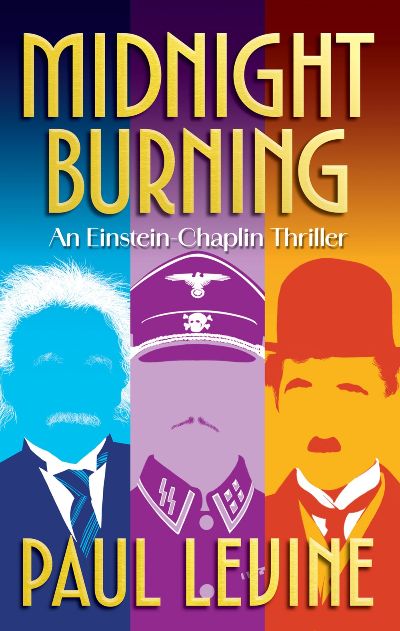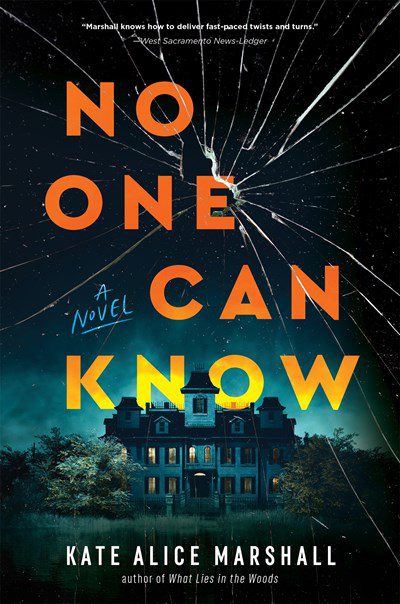Charlie Chaplin and Albert Einstein met in real life. Here that short interaction is included—the author has done his research, big time—but as part of a fictional steadfast friendship between the two that’s filled with loving banter and crime solving. The series debuts in 1937 as the scientist and actor are older, well-known figures. Chaplin is considering a movie that will lampoon Hitler (his real film The Great Dictator) and Einstein is teaching at Caltech and following with dread and guilt the development of a devastating weapon, the atom bomb, enabled by his work. When Nazis visit LA as part of a propaganda effort and all signs point to looming danger, the friends team up with Georgia Ann Robinson, the first Black female detective in LAPD history (also a real person), to thwart the plans. Antisemitism and racism are given lurid front seats here, with both shown as grotesque blights on our world. Readers will readily see parallels with white-nationalism today, making this a timely and ire-provoking read. They will also learn a great deal about Chaplin (less about Einstein, though he’s still well fleshed out), with his ladies-man ways on full display along with his kindness and sharp wit. This series promises to mix fun capers with serious societal commentary and is one to watch out for.
Crime
You know those cute programs where kids leave their teddy bear for a library sleepover? This is nothing like that. Instead, staying in the library overnight are student workers who have just completed a tough interview process for the one permanent job on offer in the university’s rare-books department (Jurczyk is mining a setting similar to her 2022 The Department of Rare Books and Special Collections), a toxic workplace if ever there was one. Also attending is non-student Ro, along because he can provide the drug, acid, that will kickstart a ceremony that student Davey has meticulously planned. Davey has invited Ro and five others to re-enact a Greek tradition around the Persephone myth, in which intoxicated pilgrims face either death or the thing they most fear, in order to conquer the fear. The tortured inner voice of narrator Faye, the shyest library employee, is used to wonderful effect by Jurczyk to chronicle a frenzied, terrifying night in a locked room—the library’s basement cage—that starts with a killing. The ending here is a shock, and along the way the author delivers chills that are packed with narcissistic venom and choking claustrophobia. This will be a hit with those who enjoyed Jurczyk’s previous work. If you like myth retellings, try one of the many versions of the Irish Tír na nÓg story, which mirrors elements of the tale of Persephone.
Jhonni Laurent is the first female sheriff in her rural Indiana town of Field’s Crossing and its surrounding quad-county area. She tries to be more community oriented than her predecessor, showing up at the first day of school to greet parents and students, for example, and avoiding all efforts at improper influence. Her work is a hit with locals but isn’t appreciated by a colleague whom she beat in the race for the job. Or his nasty buddy at the local newspaper, who’s doing all he can to get Jhonni out of the political picture. She doesn’t need the first local murder in…ever?…to happen on her watch, but when teenager Stephanie Gattison is found frozen in a snowbank, it looks like foul play. The body is barely thawed before another victim is found, this time an ice fisher who’s found frozen to the lake surface. Fans of Emily Littlejohn’s Detective Gemma Monroe and Tony and Anne Hillerman’s police officer Bernadette Manualito will enjoy making the acquaintance of this steadfast, likable, and capable sheriff, while those who love a small-town atmosphere, with its closeness as well as its backbiting, will feel right at home here. A debut author to watch.
Paraplegic forensic Captain Lincoln Rhyme; his wife, Detective Amelia Sachs; and their team of NYPD officers race against the clock in Deaver’s terrifying thriller. A construction crane collapses, and without a last-second move by the operator, it would have done extensive damage. The crash ends up only killing several people rather than hundreds. It was sabotage, and the crash is only the beginning, as those claiming responsibility will conduct another act in 24 hours unless their demands are met. One by one, the team members experience accidents designed to eliminate Rhyme’s trustworthy colleagues and those he truly cares about. Rhyme learns that the mastermind is someone he has been unable to capture, The Watchmaker. The Captain’s nemesis seeks revenge, his end goal to murder Rhyme. Deaver is the master of manipulation and telling a story quickly, and he is at the top of his game here. Readers should not be intimidated by the 15 previous entries in the series, as this one can be read as a standalone. The Watchmaker’s Hand is a fantastic thriller with great characters and jaw-dropping surprises.
What starts out as a simple story of marital discord grows into something so much richer and more terrifying. Emma and her husband are in a bad way. They’re broke—he’s lost his job, a fact he has been hiding from her—and she’s pregnant, although he’s pressuring her to have an abortion. The one asset Emma has is her share in the family home. But neither Emma nor her two sisters, whom she is estranged from, have stepped foot in the house in 14 years. And for a good reason: their parents were murdered there, leaving behind a horrible, bloody mess and years of psychological damage. But Emma’s husband insists that moving back in is their only option, despite Emma’s belief that their taking up residence in the house will unseal secrets that have been kept buried for years. The story moves artfully between the past, especially the night of the murders, and the present, when Emma’s sisters show up on the scene, and law enforcement reinforces the 14-year-old belief that Emma was the murderer. We end far from where we started, in a novel that is both tremendously complex and wonderfully readable. A remarkable achievement.
This doozy of a thriller centers on true-crime author Amanda Bailey, who is working on a book about the Alperton Angels, a suicide cult that 18 years ago mostly killed itself off. Survivors were few: Gabriel, the now-jailed leader; a teen boy and girl, long disappeared; and their newborn baby, also gone missing. Finding the baby, now that he or she is reaching maturity, is central to the story—and the success of Amanda’s book. Like Hallett’s previous novels (The Appeal and The Twyford Code), this book is immensely clever, written in a dossier style that serves up Amanda’s research, communication, and discoveries, from emails to texts, from film treatments to transcripts, and from casual phone calls with her assistant to historical news stories. Another author, and sort of frenemy, Oliver Menzies, is also writing a book about the Angels, and eventually he and Amanda are forced to share their information, descending together into the deep, dark world of the Angels. Some will find the book’s reliance on multiple texts too artificial, but most readers will be dazzled by Hallett’s creativity, will enjoy their engagement in solving the book’s many puzzles, and will love the dynamite conclusion.
A novel that, in a good way, defies description. Harriet Kealty, an out-of-work cop, discovers a used book with the phrase “Help me, he’s trying to kill me” inscribed inside. Most of us would ignore it, but Harriet, with time on her hands, decides to investigate. At first, we’re in a classic police procedural, with Harriet sorting out possible leads. Eventually, she’s drawn to a family that’s rife with death, grief, and mystery, a family that she’s surprised to find includes Ben Elmys, whom she has dated and who broke off their extremely intense relationship. Here the novel shifts, shedding realism for a narrative that is more speculative fiction as time becomes paramount while love—lost only to be found again—remains central to the story. Where we end up is as beautiful as it is unpredictable, and Hamby provides the reader with plenty to dwell on. Recommend this book to readers who love a good tale and aren’t afraid of fiction that can’t be easily categorized.







